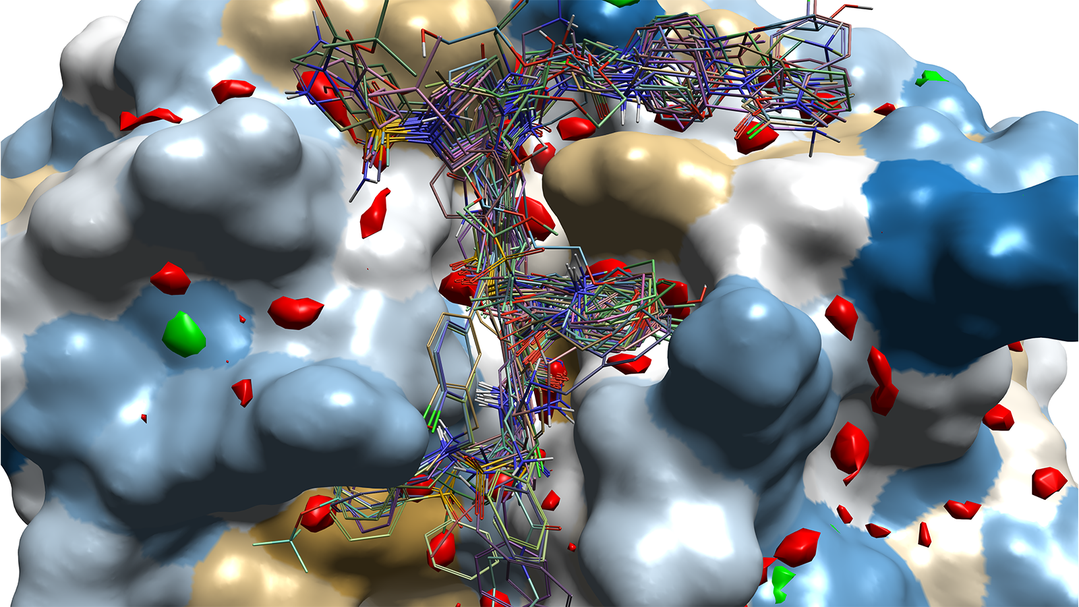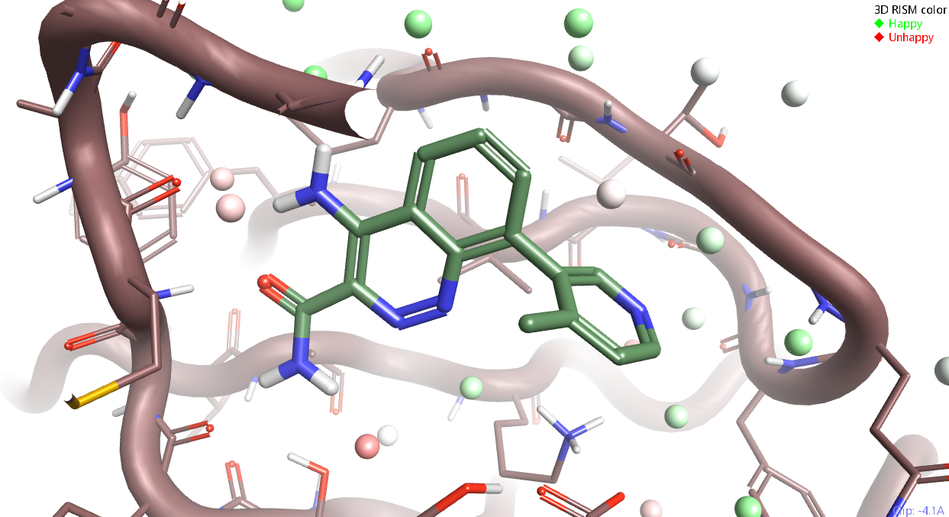flare™
Water analysis you can trust
Using GIST and 3D-RISM approaches, Flare provides insights into binding pockets that you can exploit in your inhibitor strategy
Understanding and exploiting water stability analysis is a key technique in structure-based design.
Flare provides GIST and 3D-RISM approaches to give added confidence in your results, and to highlight regions of low water stability that can be exploited to gain additional potency and selectivity in your ligands whether working with an apo or liganded structure.
- Understand water energetics of your protein
-
Calculate optimal locations of water around your ligands
-
Design new ligands and understand their water interactions
-
Perfect protein electrostatic analysis by including stable waters in the calculations
GIST
GIST uses the OpenMM dynamics engine running on GPUs to analyze water stability. It can be used both on empty and liganded proteins and in each case generates heat surface maps that highlight regions of high and low water stability.

GIST uses OpenMM running on GPUs to analyze water stability generating heat surface maps that highlight regions of high and low water stability.
3D-RISM analysis
3D-RISM analysis in Flare utilizes the advanced inter-molecular descriptions of the XED force field or of the AMBER GAFF force field to give you a water analysis you can trust. 3D-RISM will give results across the whole protein or can be used to place waters within the active site, with or without a ligand present.

3D-RISM analysis uses the advanced inter-molecular descriptions of the XED force field to give you a water analysis you can trust.
References and acknowledgements
S. Ramsey, C. Nguyen, R. Salomon-Ferrer, R. C. Walker, M. K. Gilson, T. Kurtzman, Solvation thermodynamic mapping of molecular surfaces in AmberTools: GIST, J Comput. Chem. 2016, 37(21):2029-37
R. Skyner, J.L McDonagh, C.R. Groom, T. van Mourik, J. B. O. Mitchell, C. R. Groom, T. Van Mourik, A Review of Methods for the Calculation of Solution Free Energies and the Modelling of Systems in Solution, Phys. Chem. Chem. Phys. 2015, 17 (9), 6174